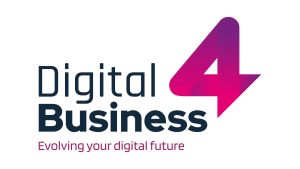Best practices
Accreditation under the European approach - Challenges arising from the different status of national implementation
Users: Training providers (public) | Training providers (private) | Theme: Accreditation and certification | Action: Education programmes/courses | Beneficiaries: Training providers (public) | Training providers (private)
The aim of the Digital4Business (D4B) project is the conception and development of a joint Master’s degree program by four (originally six) European Higher Education Institutions (HEIs): the National College of Ireland (Ireland), Universidade Nova de Lisboa (Portugal), Università di Bologna (Italy), and Linköping Universitet (Sweden) in collaboration with partners from industry. One of the milestones in the project is the accreditation of the Master’s program. Here, the consortium opted for an accreditation procedure under the European Approach, an accreditation methodology developed specifically for joint programs. The European Approach was primarily chosen for reasons of efficiency. The main benefits of the European Approach are: (i) it facilitates external quality assurance through the application of common standards and guidelines, which leads to mutual recognition of the accreditation procedure across the participating countries; (ii) it significantly reduces the administrative and organizational burden by applying to one single accreditation body. The European Approach eliminates the need for multiple applications, assessments, and reviews, saving time and resources for institutions. Moreover, instead of undergoing separate accreditation processes in each participating country, joint programs can be assessed once against a common set of standards and with a joint site visit at only one institution/in only one country. Without the European Approach, all four HEIs would have had to carry out individual national accreditation procedures, which would have resulted in significantly more time and effort as well as much higher costs.
The challenge?
In the accreditation preparation phase, the D4B consortium learned that the European Approach accreditation will only be available and fully recognised in countries that have implemented the European Approach. As the European Approach is only a political commitment and not a legally binding agreement, it requires implementation at the national level. Regarding national implementation, the European Quality Assurance Register for Higher Education (EQAR) differentiates between three categories: 1) European Approach available to all HEIs, 2) European Approach available to some HEIs or only under specific conditions, 3) European Approach not available to HEIs. The consortium found that Ireland and Portugal fall under the second category and that the European Approach is available at these two institutions. However, this was not the case for Italy and Sweden as these two countries have not implemented the European Approach at national level, which means that a European Approach accreditation is not possible at any HEI from these countries.
Our solution
The fact that the European Approach is not available in all countries was solved by the decision that only the Ireland and Portugal (both countries have (partly) implemented the European Approach at national level) will be degree-awarding countries. The two HEIs from Sweden and Italy are still fully and actively engaged in the design, implementation and delivery of the program but only act as providing (i.e. non-awarding) institutions.
Outcomes
The Master’s program was initially accredited with requirements. The accreditation procedure was carried out by ASIIN, a European registered accreditation agency, applying the European Approach. The fulfilment of requirements was completed after six months, which was six months before the official deadline. The Master’s program received full accreditation for a period of six years, which corresponds to the recommendations of the European Approach procedures. Valid until 30 September 2030, the final D4B accreditation is recorded in EQAR
Key takeaways
HEIs should inform themselves about the national accreditation requirements at an early stage (possibly even before a proposal is submitted).
All (academic) partners should have a high degree of flexibility (e.g. with regard to internal resource and budget allocation) in order to be able to react to unexpected problems or changing conditions. This is a lesson learned of particular importance within the D4B project as the consortium had to compensate for the loss of two of the (initially) six universities in the middle of the accreditation process. One had decided to withdraw from the consortium and only remain as an associated partner. The other one was no longer suitable as an academic partner as it was lacking official recognition as a university by the state/ministry. The loss of the two academic partners meant that the modules that had been developed by them had to be redistributed among the four remaining universities. Fortunately, the redistribution worked smoothly thanks to the close cooperation and solution-oriented approach of all partners. Ultimately, the redistribution of modules served as a good opportunity to revise and update the module content.
When choosing the European Approach, the consortium, and particularly the academic partners, must be clear from the very outset that this is a joint effort that requires close cooperation, a great deal of coordination, very good planning, and a well-thought-out distribution of responsibilities and tasks. It is very important that all (academic) partners contribute to this joint procedure, in particular for drafting and compiling the necessary documentation to be included in the self-evaluation report.
Even if, as mentioned above, the European Approach was chosen for reasons of efficiency and because of the lower administrative burden, the effort involved in preparing a (successful) accreditation procedure should not be underestimated. Compiling the extensive set of application documents is not only very time-consuming, but also reveals some of the content-related, formal and organizational challenges that arise when several higher education institutions from different countries jointly develop and deliver a degree program. The consortium should be very aware of this effort and the high workload from the outset and allow sufficient preparation time (including improvement loops etc.).

